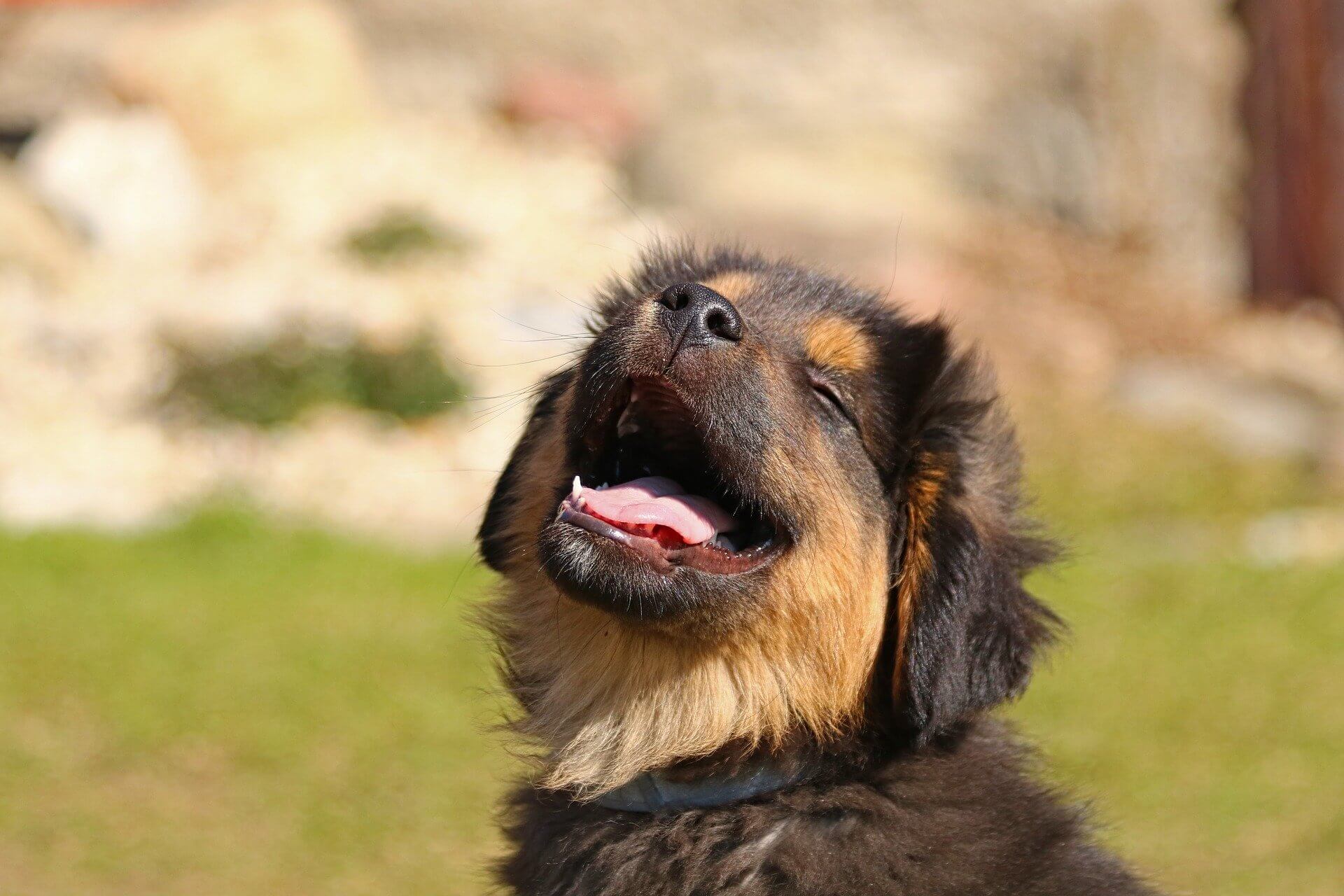
We all know that puppies and kittens can be a handful. They initially need monthly check-ins with the vet. A series of vaccinations is needed. Hours and hours of puppy training should also be invested. But did you know that growing puppies and kittens also need to have their mouths checked regularly while developing? If you didn't then you're probably asking "Why?" now. Well in this article, we'll talk about everything you need to know about your pet's baby teeth, and how to catch unwanted problems at the "root"!
When Do My Pet's Teeth Start Coming In?
Deciduous, aka ‘baby’ teeth, begin to erupt at 3-4 weeks of age with dogs having 28 baby teeth and cats having 26. The adult teeth begin erupting as soon as 3 months of age finishing as late as 7 months of age. A normal adult dog has 42 teeth. A typical cat has 30 adult teeth by 6 months of age.

Most of this change happens in the 4-6 month age time period when one can see both adult and baby teeth, known as mixed dentition. Some people say this time can cause your pet to feel irritable or not themselves as teething can be an uncomfortable process. One often sees puppies chewing on things they shouldn’t, or in rare instances, a lack of interest in food. It’s always a good idea to get your pup checked out if you’re noticing these issues, as they could also be linked to other issues going on. If you would like to learn more about teething in puppies and the proper chew toys to use while they're going through this, go to our blog titled "What to Look For in a Chew Toy" or click here. Remember many things at the store can break teeth and are not appropriate.
They are born with adult teeth present in bone still continuing to form roots before they emerge from the gums. While they’re growing, they begin to put pressure onto the current deciduous teeth and stimulate them to begin reabsorbing. After the baby teeth’s roots have been reabsorbed, the crowns and hollow shells of the teeth are pushed out of the tooth socket and from the mouth. This is what should happen as your pet's adult teeth begin to come in, but it doesn't always work out that way. Many owners also think they will find their dog’s baby teeth. Most of the time, they are swallowed or lost, never to be seen usually without consequence.
What Are Persistent Deciduous Teeth?
Baby teeth (also called primary or deciduous teeth) that are still present when the adult teeth begin to emerge are called persistent deciduous teeth. The persistent deciduous teeth cause the forming adult teeth to emerge from the gums in an altered position.
Persistent deciduous teeth could lead to more secondary issues within your pet's mouth. Not only will the adult teeth and baby teeth be in the same spot, but the main concerns are secondary alignment issues causing a painful bite and periodontal disease due to crowding. With more teeth in the mouth, it is more likely for food, hair, and other debris to collect around teeth and cause inflammation. This can create faster periodontal disease development, which is commonly seen as the red swelling in your pet's mouth and can have degrees of bone loss below the gum line. The rule to remember is that two teeth should never be in the same spot at the same time after six months of age. Sometimes we need to intervene earlier as well. it is important to remove the baby tooth as soon as the problem arises especially in small dog breeds that are more likely to develop both persistent baby teeth AND periodontal disease.
Removing baby teeth is not as simple as one would think. The roots are often 3 to 4 times as long as the crown. The first photo shows the tooth, the second shows the full tooth including root.
If roots happen to break, they have the risk of causing eye and nasal issues. There is a common conception that broken roots will be resorbed by the body, but this happens much less frequently than veterinarians as a whole think it does. The retained tooth root contains the pulp (blood vessels and nerves), a source of pain and disease. These become a chronic source of hidden pain that your pet cannot tell you about. This is just one reason for the importance of taking full mouth intraoral x-rays on every anesthetic dental procedure.

Another common problem seen with persistent deciduous teeth would be if it was a lower canine that was affected: In this case, the adult tooth erupts too close on the tongue side because the baby teeth has not been lost (as mentioned above). This results in the lower canines poking into the roof of the mouth and causing open wounds, infection, or even upper tooth or nose damage. Often times this is accompanied by the lower mandibles being too short, a growth discrepancy that is usually genetically predisposed. With the mandibles being too short, there isn’t enough space for the canines to tip outward and interdigitate with the upper teeth. Sometimes a baby tooth may not yet be persistent but the jaw length relationship allows the lower canines to catch in the soft tissues of the palate preventing the appropriate growth.

Is My Pet At Risk for Persistent Deciduous Baby Teeth?
Small dogs or dog breeds are more likely to develop persistent deciduous teeth and especially brachycephalic (smush-faced) dogs. Any baby tooth could end up being persistent, but it’s most commonly in the upper canines. After that would be the lower canines and then the incisors.
If your puppy has a jaw length discrepancy or the lower canines (baby and/or adult) erupt to contact the palate with or without persistent deciduous teeth, this condition can be hereditary. It is not recommended to breed dogs with this condition even if it is corrected.
Are There Treatment Options for Persistent Deciduous Baby Teeth?
Yes! Persistent baby teeth should be extracted as soon as they are noticed. It will require general anesthesia and careful precautions will be taken by the performing veterinarian to try to prevent the crowns of the adult teeth to be damaged during the procedure. If the persistent baby teeth are not noticed until neutering, then it is okay to have it done during the same procedure. Waiting to have the baby teeth removed could lead to malposition of the adult tooth, slowing the growth of the lower jaw, and/or bone loss around the adult tooth. The sooner the problem is found and treated, is more likely the resolution to be faster and simpler.
After discharge from the dental extraction, your pet should remain on a soft diet for 10-14 days after the dental procedure. This means wet food or if your pet won’t eat wet food then dry kibble softened and soaked in water. In addition to using pain management during the dental procedure, your veterinarian will usually send you home with additional pain medication for 3-5 days after surgery. Brushing and wipes should be avoided until 10-14 days after the procedure when your pet comes back in for the Medical Progress Exam. This re-evaluation appointment is to ensure that your pet is healing properly from the dental procedure and no additional problems have arisen.
A persistent baby tooth without an adult counterpart seen visually or radiographically (on x-ray), is an exception. It can be treated like any normal tooth. It usually has thinner, longer roots, but can stay as long as it is healthy on the margin and inside as we evaluate all teeth.
Is There Any Kind of Prevention?
There is no prevention as the main influence is genetics. The best way to avoid any serious complications would be to catch the situation as early as possible. This is part of the evaluation your veterinarian should look at during the puppy visits which are typically at 6, 9, 12, and 16 weeks of age. Having additional visits at 20 and 24 weeks can be helpful to catch changes during this rapid growth phase. You can also begin brushing your pet's teeth and cleaning with dental wipes at 2 weeks of age, but you should remain gentle during this time as the teeth coming in are fresh and tender. Brushing or wipes should be used daily or at least every other day to be effective in dental care. If you keep this habit up and start early, it’s much easier to continue as they grow older. Additionally, by brushing your pet’s teeth every day, you’re able to get a good look at the mouth and notice any differences or issues as soon as they arise.
Final Verdict:
Two teeth in the same location are a serious concern that should be evaluated as soon as it is discovered. Additionally, the earlier the problem is found, one can have easier methods to correct it before the problem worsens. If you notice anything that doesn’t look right or any additional teeth where they shouldn’t be, give us a call or schedule an appointment with us to get it checked out!
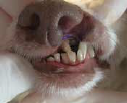 During embryonic development, a defect can occur causing clefts/openings in the nose, lip, and/or palate. This allows food and fluid from the mouth to enter the nasal passages causing issues. Special surgical techniques are used to close the defects, as there is often insufficient tissue to close in a standard surgical fashion. These cases may sometimes require multiple surgeries to correct the problem but the outcome usually makes great improvement in the life of the pet.
During embryonic development, a defect can occur causing clefts/openings in the nose, lip, and/or palate. This allows food and fluid from the mouth to enter the nasal passages causing issues. Special surgical techniques are used to close the defects, as there is often insufficient tissue to close in a standard surgical fashion. These cases may sometimes require multiple surgeries to correct the problem but the outcome usually makes great improvement in the life of the pet.





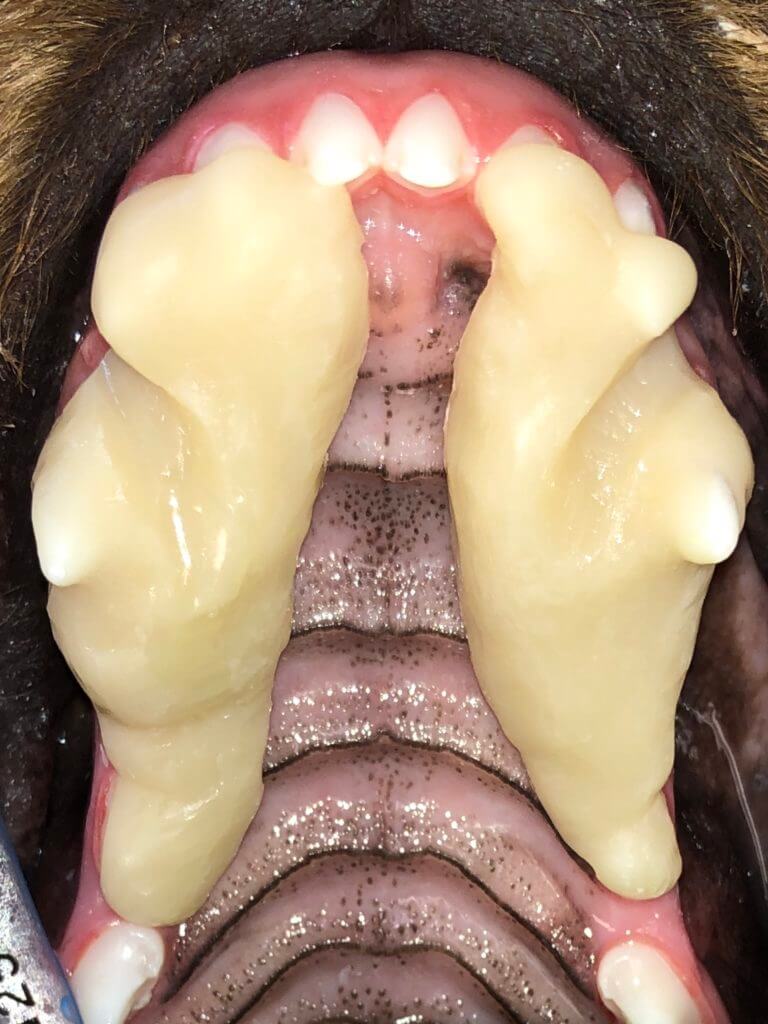
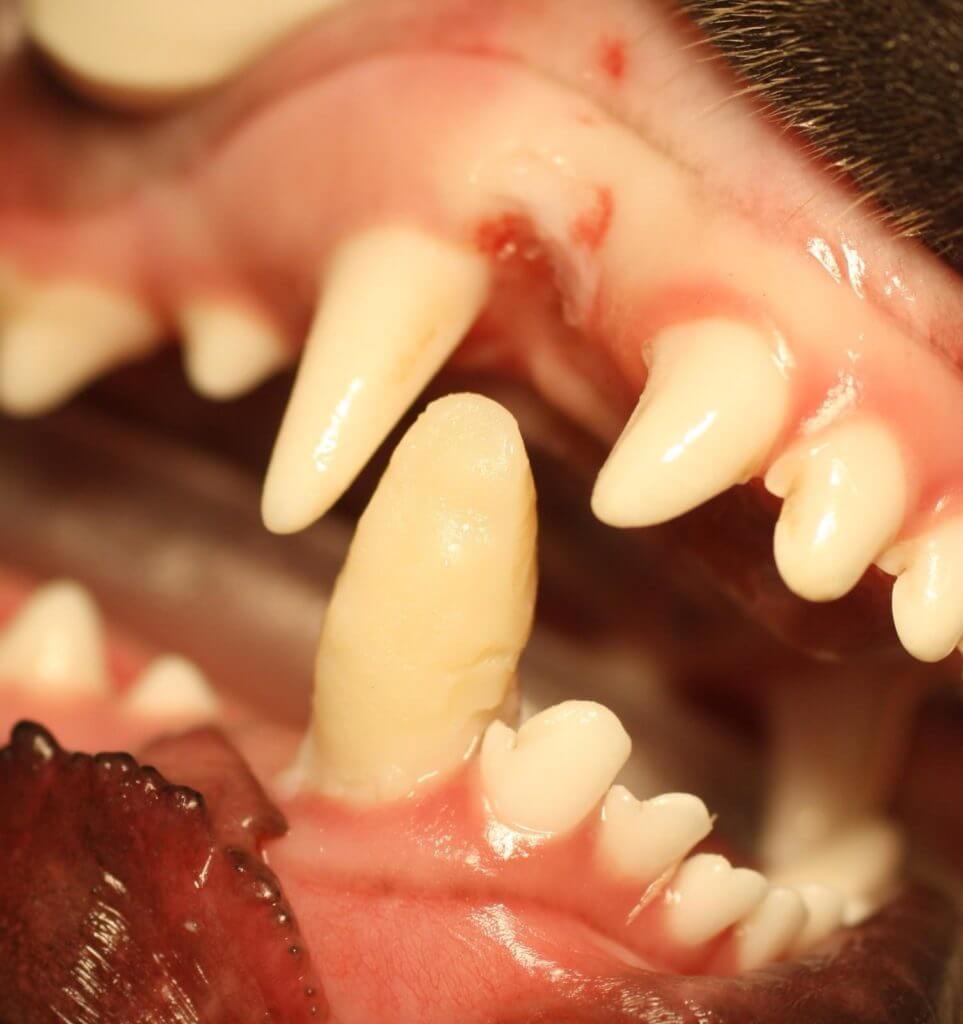
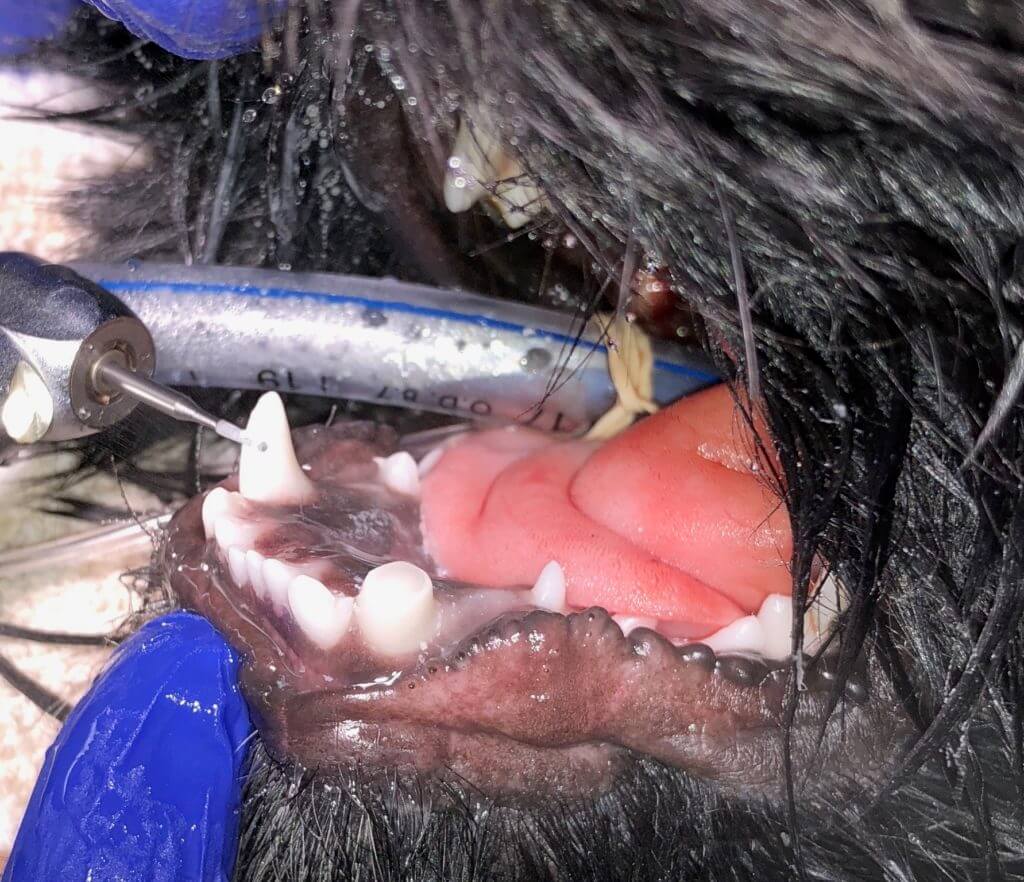



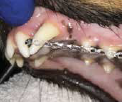 Yes, we can do braces in pets! Braces are done not for cosmetic reasons but to treat or prevent subsequent pain or infection. One of the most common conditions to use braces are lanced canines—cases in which the tooth is pointing forward instead of down. Correction with orthodontics takes 3 weeks to 3 months depending on the amount of movement and the pet age. Pets tolerate the brackets and elastics very well.
Yes, we can do braces in pets! Braces are done not for cosmetic reasons but to treat or prevent subsequent pain or infection. One of the most common conditions to use braces are lanced canines—cases in which the tooth is pointing forward instead of down. Correction with orthodontics takes 3 weeks to 3 months depending on the amount of movement and the pet age. Pets tolerate the brackets and elastics very well.

.jpg?width=288&height=192&name=closeup-portrait-of-orange-persian-cat-with-chubby-2022-11-14-06-05-27-utc%20(1).jpg) Pets that have problems opening and closing the mouth, or a clicking sound is heard may have temporal mandibular joint (TMJ) problems. Drooling or eating changes can be the only signs owners notice. Surprisingly many pets are good about eating even when they have pain. One or more types of imaging of the TMJ are needed. Depending on the findings, a surgical treatment or orthodontic elastics may be part of the therapy for recovery.
Pets that have problems opening and closing the mouth, or a clicking sound is heard may have temporal mandibular joint (TMJ) problems. Drooling or eating changes can be the only signs owners notice. Surprisingly many pets are good about eating even when they have pain. One or more types of imaging of the TMJ are needed. Depending on the findings, a surgical treatment or orthodontic elastics may be part of the therapy for recovery.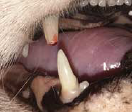 Chewing hard objects such as bones, antlers, hooves, etc... is the most common reason for tooth breakage. When the pulp is involved through crown or tooth root fracture, the only choices are extraction or root canal therapy (endodontics). While dogs have 42 teeth and cats have 30, only 8-10 of these teeth are needed for function. We wish to save these teeth through endodontics. This retains structure and function but the tooth is no longer living nor painful.
Chewing hard objects such as bones, antlers, hooves, etc... is the most common reason for tooth breakage. When the pulp is involved through crown or tooth root fracture, the only choices are extraction or root canal therapy (endodontics). While dogs have 42 teeth and cats have 30, only 8-10 of these teeth are needed for function. We wish to save these teeth through endodontics. This retains structure and function but the tooth is no longer living nor painful.



 In some cases of trauma, the problem occurred while the tooth was still developing the tip of the root (apex). Other times disease of the tooth can dissolve the apex. These teeth still can be saved even with apical disease. They require a non-standard root canal therapy, best termed apexification that is performed over 2-4 separate anesthetic events to result in a structural and functional tooth without disease.
In some cases of trauma, the problem occurred while the tooth was still developing the tip of the root (apex). Other times disease of the tooth can dissolve the apex. These teeth still can be saved even with apical disease. They require a non-standard root canal therapy, best termed apexification that is performed over 2-4 separate anesthetic events to result in a structural and functional tooth without disease.


 Sometimes a tooth will contact an object often during play and the time of tooth fracture will be known. If a tooth fracture is less than 48 hrs old on a dog older than 18 months, or less than 7 days old on a dog younger than 18 months, a ‘mini root canal therapy’ known as vital pulp therapy (VPT) may be performed. This preserves the vitality, structure, and function of the tooth and just makes it a bit shorter.
Sometimes a tooth will contact an object often during play and the time of tooth fracture will be known. If a tooth fracture is less than 48 hrs old on a dog older than 18 months, or less than 7 days old on a dog younger than 18 months, a ‘mini root canal therapy’ known as vital pulp therapy (VPT) may be performed. This preserves the vitality, structure, and function of the tooth and just makes it a bit shorter.




 There are cases of trauma in which the tooth is ‘knocked out’ or avulsed without breakage of the tooth root. These teeth need to be put into a glass of milk and can be reimplanted and splinted within 24 hrs. The blood supply to this tooth became disrupted so the pulp dies, but a follow-up root canal procedure one week later results in a structural and functional tooth without pain. In some cases, there is not enough bone nor can bone augmentation be sufficient due to surrounding disease, but in many cases, avulsed teeth can be saved.
There are cases of trauma in which the tooth is ‘knocked out’ or avulsed without breakage of the tooth root. These teeth need to be put into a glass of milk and can be reimplanted and splinted within 24 hrs. The blood supply to this tooth became disrupted so the pulp dies, but a follow-up root canal procedure one week later results in a structural and functional tooth without pain. In some cases, there is not enough bone nor can bone augmentation be sufficient due to surrounding disease, but in many cases, avulsed teeth can be saved.




 The exception to this discoloration discussion is reversible pulpitis. When a concussive force occurs to the body, usually a bruise is formed and resolves it. When a concussive force occurs to a tooth, if a pet were lucky enough to have a ‘bruise’ and still have the tooth continue to live, the breakdown products would still leech into the tubules discoloring the tooth. The veterinarian can prescribe antibiotics (amoxicillin-clavulanate or clindamycin) and non-steroidal anti-inflammatory drugs (provided the pet’s bloodwork is appropriate) for 7 days. If the tooth’s color doesn’t return to normal after two or three months, you can assume it’s irreversible discoloration (pulpitis) leaving the only appropriate choices of root canal therapy or extraction. If the tooth improves, it must be followed with intraoral x-rays in 4-6 months, then every 6-12 months. The continued discoloration is likely an irreversible process and 42% of the time x-rays will verify it. It does take 4-6 months for x-rays to show mineralization change, thus answers will not usually be known right away.
The exception to this discoloration discussion is reversible pulpitis. When a concussive force occurs to the body, usually a bruise is formed and resolves it. When a concussive force occurs to a tooth, if a pet were lucky enough to have a ‘bruise’ and still have the tooth continue to live, the breakdown products would still leech into the tubules discoloring the tooth. The veterinarian can prescribe antibiotics (amoxicillin-clavulanate or clindamycin) and non-steroidal anti-inflammatory drugs (provided the pet’s bloodwork is appropriate) for 7 days. If the tooth’s color doesn’t return to normal after two or three months, you can assume it’s irreversible discoloration (pulpitis) leaving the only appropriate choices of root canal therapy or extraction. If the tooth improves, it must be followed with intraoral x-rays in 4-6 months, then every 6-12 months. The continued discoloration is likely an irreversible process and 42% of the time x-rays will verify it. It does take 4-6 months for x-rays to show mineralization change, thus answers will not usually be known right away. Any time a tooth is damaged, the structure is lost. If there is reason to believe the impact will keep recurring on this tooth (such as chewing hard objects), a crown should be considered. Some reasons for full metal titanium alloy crowns:
Any time a tooth is damaged, the structure is lost. If there is reason to believe the impact will keep recurring on this tooth (such as chewing hard objects), a crown should be considered. Some reasons for full metal titanium alloy crowns:


 Sometimes a tooth will break and the pet will get lucky that the break did not expose the pulp (internal tissue of the tooth = blood and nerves). This results in exposed dentin. Dentin is porous (like lava rock). Saliva and bacteria infect the pulp through the dentinal tubules. If the radiographs (x-rays) show the tooth is not yet affected (~75% chance), a bonded sealant restoratove can be applied to seal the tubules stopping the problem. Six months later, follow-up radiographs are needed to verify early infection had not already started unseen and monitor success.
Sometimes a tooth will break and the pet will get lucky that the break did not expose the pulp (internal tissue of the tooth = blood and nerves). This results in exposed dentin. Dentin is porous (like lava rock). Saliva and bacteria infect the pulp through the dentinal tubules. If the radiographs (x-rays) show the tooth is not yet affected (~75% chance), a bonded sealant restoratove can be applied to seal the tubules stopping the problem. Six months later, follow-up radiographs are needed to verify early infection had not already started unseen and monitor success.

 Numerous locations and angles of oral fractures can occur. In patients' long bones, veterinarians are taught to correct these with screws and plates. We should not treat the mouth as a long bone, as screws will enter the tooth roots devitalizing them and creating more problems that were originally there. All jaw fracture cases should see a veterinary dentist so
Numerous locations and angles of oral fractures can occur. In patients' long bones, veterinarians are taught to correct these with screws and plates. We should not treat the mouth as a long bone, as screws will enter the tooth roots devitalizing them and creating more problems that were originally there. All jaw fracture cases should see a veterinary dentist so 






 While not common, dogs can get true cavities just like, people! These are most likely to happen in the upper molar teeth that are shaped more similarly to human molars. Catching these soft pits early allows special restorative materials to be placed to correct the problem before it progresses into the pulp requiring root canal therapy or extraction.
While not common, dogs can get true cavities just like, people! These are most likely to happen in the upper molar teeth that are shaped more similarly to human molars. Catching these soft pits early allows special restorative materials to be placed to correct the problem before it progresses into the pulp requiring root canal therapy or extraction. 


 70% of cats get tooth resorption. These are often called kitty cavities but are unrelated to lack of brushing. Tooth resorption (TR) occurs as the body attacks its own teeth and ‘dissolves’ them. Because of the increased incidence of tooth resorption when inflammation is present when you treat TR through the extraction of teeth, you slow the recurrence.
70% of cats get tooth resorption. These are often called kitty cavities but are unrelated to lack of brushing. Tooth resorption (TR) occurs as the body attacks its own teeth and ‘dissolves’ them. Because of the increased incidence of tooth resorption when inflammation is present when you treat TR through the extraction of teeth, you slow the recurrence. 






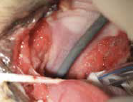

















 Missing teeth that are truly missing are fine, but teeth that appear missing because they are not seen but exist below the gumline are problems. When this tooth does not erupt, the cells continue to try to produce parts of the tooth creating fluid. This happens gradually and the fluid pressure within the jaw causes resorption of the bone around the tooth. The area continues to fill with fluid as the bone gradually resorbs resulting in little to no support
Missing teeth that are truly missing are fine, but teeth that appear missing because they are not seen but exist below the gumline are problems. When this tooth does not erupt, the cells continue to try to produce parts of the tooth creating fluid. This happens gradually and the fluid pressure within the jaw causes resorption of the bone around the tooth. The area continues to fill with fluid as the bone gradually resorbs resulting in little to no support  until the jaw breaks. All sites of missing teeth need to be verified by intraoral x-rays to see if truly missing. If the cyst (described above), called a dentigerous cyst, has formed, it needs to be removed along with its lining so the cyst does not recur. Many cases have significant bone loss requiring grafts and/or membranes to facilitate appropriate healing.
until the jaw breaks. All sites of missing teeth need to be verified by intraoral x-rays to see if truly missing. If the cyst (described above), called a dentigerous cyst, has formed, it needs to be removed along with its lining so the cyst does not recur. Many cases have significant bone loss requiring grafts and/or membranes to facilitate appropriate healing.


 Trauma, drugs, or disease during tooth development can result in abnormal enamel that does not provide good protection to the underlying dentinal tubules eventually resulting in internal disease. Special multi-step products are used to prepare and fill in the defect limiting the damage and improving the cosmetic appearance.
Trauma, drugs, or disease during tooth development can result in abnormal enamel that does not provide good protection to the underlying dentinal tubules eventually resulting in internal disease. Special multi-step products are used to prepare and fill in the defect limiting the damage and improving the cosmetic appearance. 

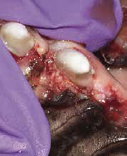 Some cases of periodontal disease results in bone loss that still has surrounding and supporting bone. These are areas for which bone grafts and/or special membranes should be used to perform guided tissue regeneration to save a tooth.
Some cases of periodontal disease results in bone loss that still has surrounding and supporting bone. These are areas for which bone grafts and/or special membranes should be used to perform guided tissue regeneration to save a tooth.



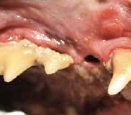 Some types of bone loss around teeth results in the need for flaps to repair the area around the tooth or close the defect in the area of the missing tooth. It is important to treat these correctly or the disease will return in as little as two weeks. Some of the major areas we treat are under-erupted lower canines, triangular gingival defects, and oral nasal/antral fistulas (ONF/OAF). ONFs and OAFs are openings between the mouth and the nasal sinuses.
Some types of bone loss around teeth results in the need for flaps to repair the area around the tooth or close the defect in the area of the missing tooth. It is important to treat these correctly or the disease will return in as little as two weeks. Some of the major areas we treat are under-erupted lower canines, triangular gingival defects, and oral nasal/antral fistulas (ONF/OAF). ONFs and OAFs are openings between the mouth and the nasal sinuses.



 Areas of enlarged gum tissue can be present, related to genetics or drug reactions, while other times it is related oral tumors. In the case of non-tumor causes, the problem is likely called gingival hyperplasia. This creates pockets between the tissue and the tooth trapping food, hair, and debris. The gums need to be resected to normal levels, removing the pocket. In many cases they will re-grow, so follow-up is necessary to keep the pet comfortable and prevent tooth loss secondary to periodontal pockets.
Areas of enlarged gum tissue can be present, related to genetics or drug reactions, while other times it is related oral tumors. In the case of non-tumor causes, the problem is likely called gingival hyperplasia. This creates pockets between the tissue and the tooth trapping food, hair, and debris. The gums need to be resected to normal levels, removing the pocket. In many cases they will re-grow, so follow-up is necessary to keep the pet comfortable and prevent tooth loss secondary to periodontal pockets.







 Many types of oral tumors exist. Some are benign but locally painful and aggressive. Others are malignant but can still be treated with a high percentage of success. All gum enlargements should be biopsied or resected and submitted to a special oral pathology lab as many similar-looking masses can be many different results necessitating different additional therapies. Studies show 32-100% (depending on tumor type) remission with
Many types of oral tumors exist. Some are benign but locally painful and aggressive. Others are malignant but can still be treated with a high percentage of success. All gum enlargements should be biopsied or resected and submitted to a special oral pathology lab as many similar-looking masses can be many different results necessitating different additional therapies. Studies show 32-100% (depending on tumor type) remission with  wide-margined surgical excisions. Most pets respond well to these major surgeries and live a quality life enjoying further companionship.
wide-margined surgical excisions. Most pets respond well to these major surgeries and live a quality life enjoying further companionship.









